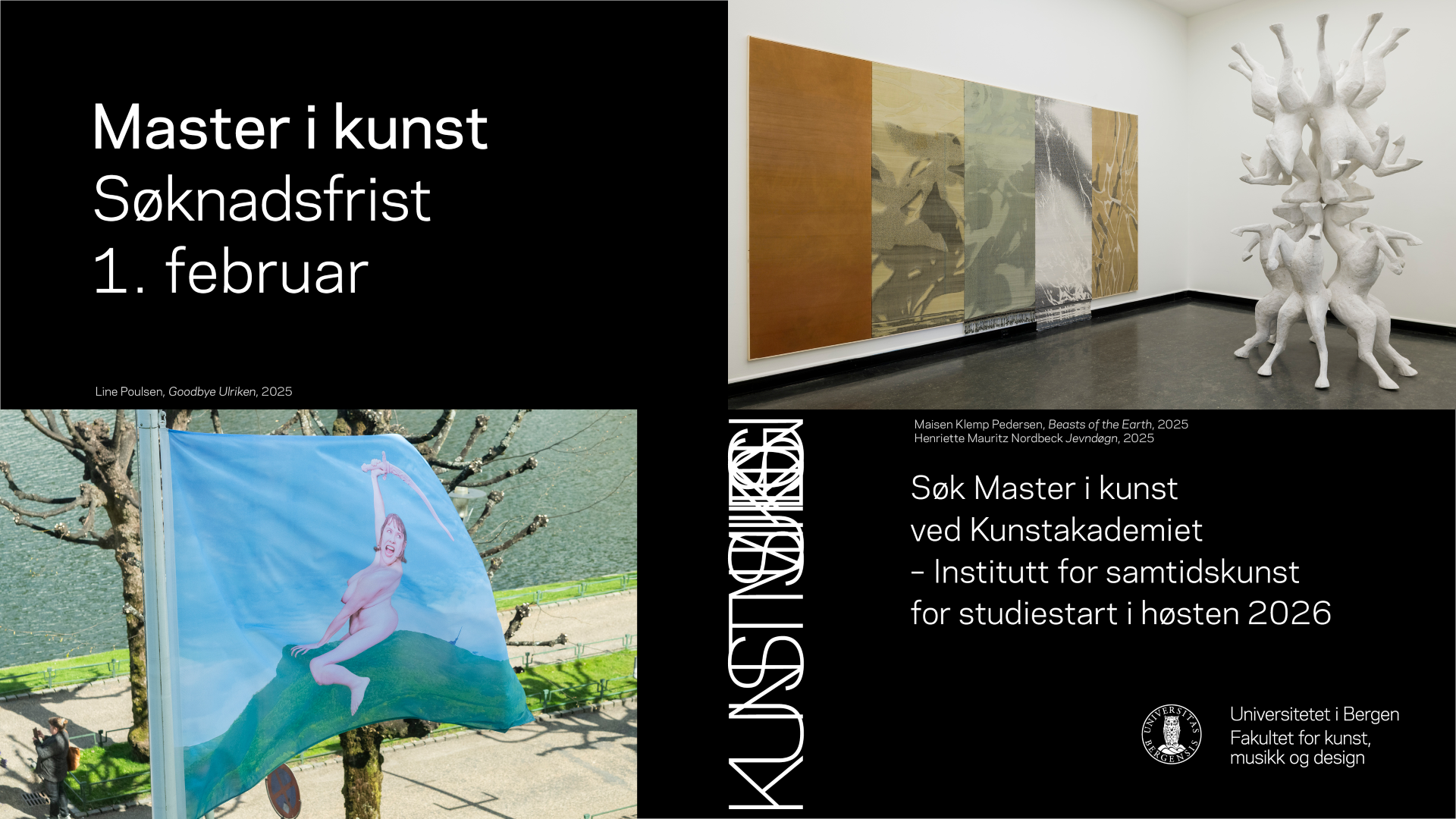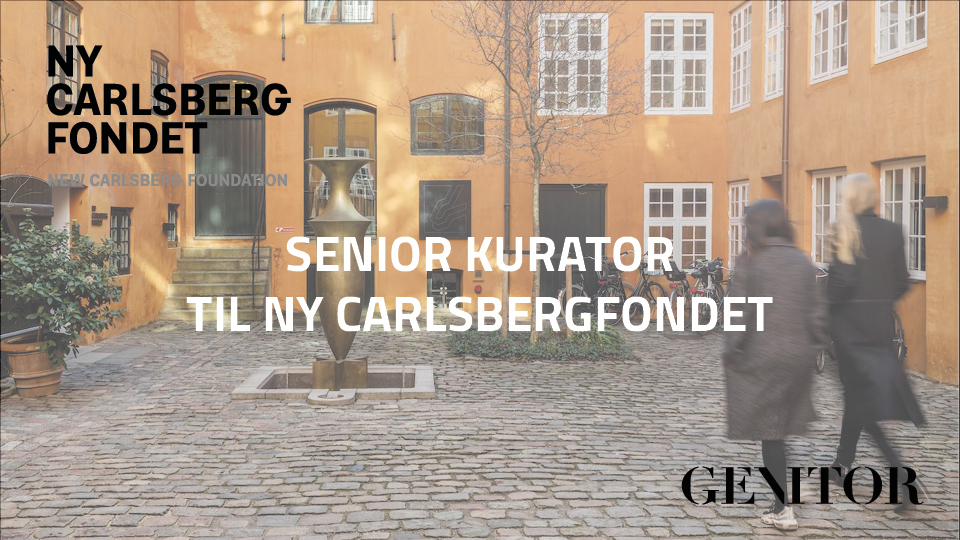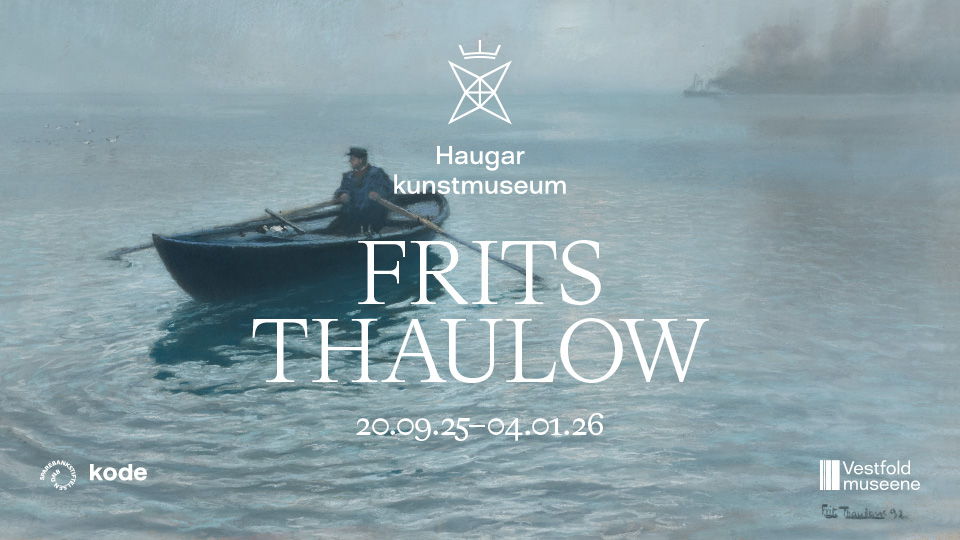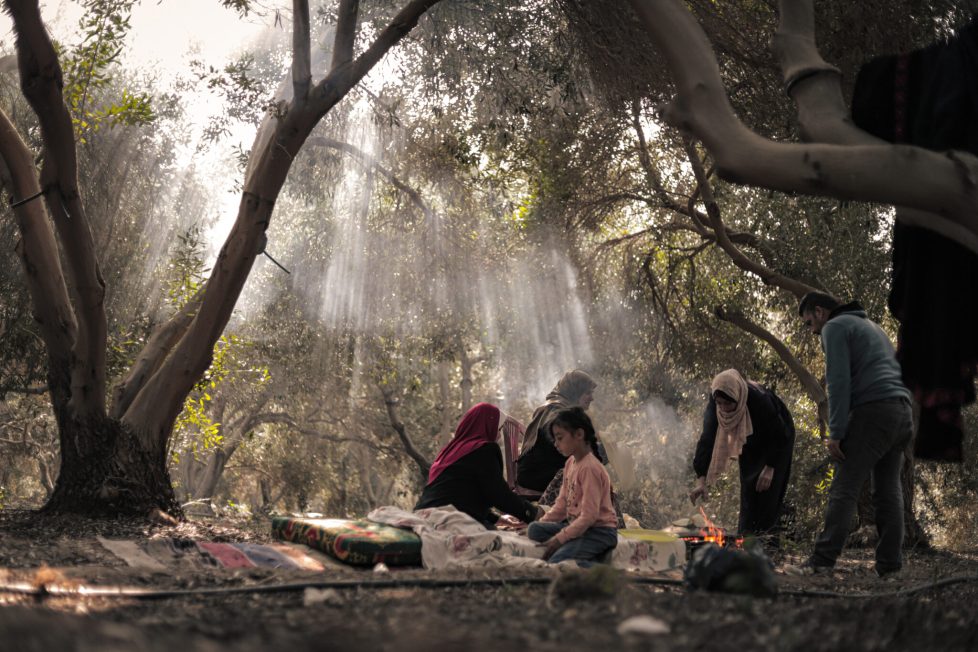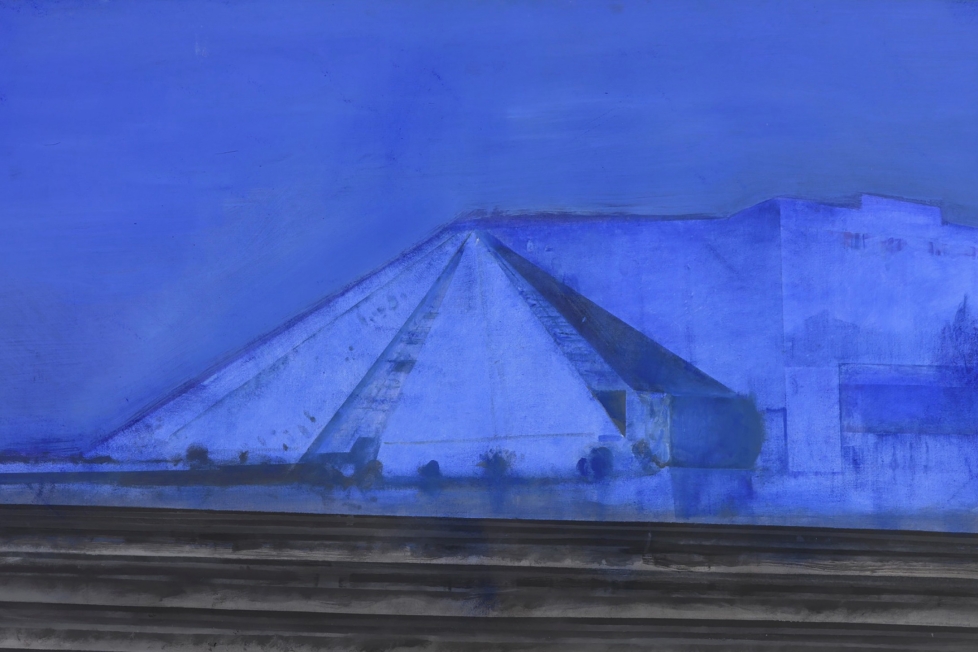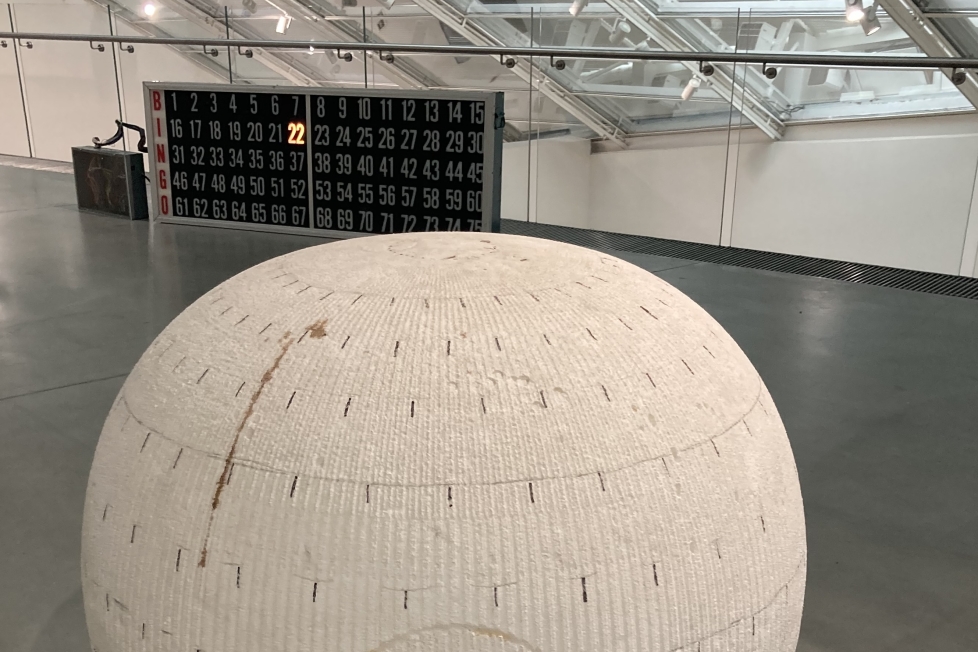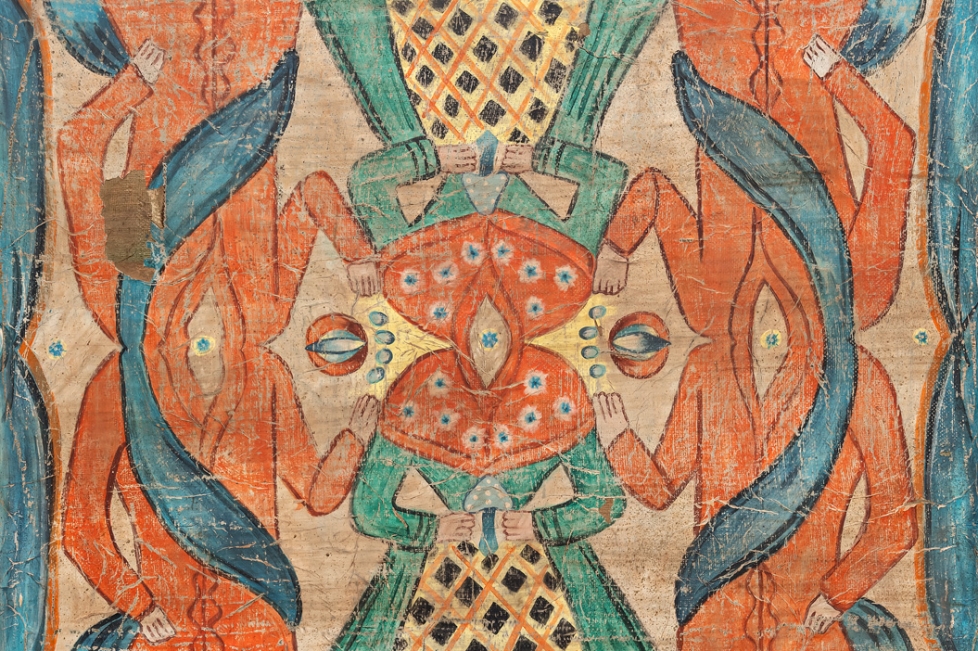
Following the presentation of her twenty-four meter-long needlepoint tapestry Historjá (History, 2003–07) at Documenta 14, Britta Marakatt-Labba’s work has garnered significant institutional attention. In her native Sweden, the Övre Soppero-based artist’s work has recently been featured in exhibitions at Bonniers Konsthall and Moderna Museet, as well as the Luleå Biennial and a solo-presentation at Gävle Konstcentrum. The most recent addition to this growing tally is ‘Historia i stygn’ (History in stitches), on view at Lund’s Konsthall through mid-January, and thereafter traveling to Kohta, a newly opened private kunsthalle in Helsinki, with Västerbottens Museum in Umeå to follow.
Confirming that the attention currently being paid is well-deserved, this ambitious retrospective spans the last forty years and features a bevy of works gathered courtesy of a long list of institutional and private lenders including the Sami School board in Jokkmokk, and a cardiologist’s office in Finnmark. Even a replica of Historjá is presented on the konsthall’s second-floor, courtesy of Tromsø University in Norway where the original work is permanently installed. Unfortunately, as others have commented, the reproduction pales in comparison not only to the original but to the other works on display, whose meticulously threaded figures on snow-white linen are simultaneously (improbably) vivid and subtle. One would hope that the show’s future iterations don’t insist on repeating this error, as there is more than enough to ponder elsewhere.

Visitors to the exhibition are greeted by smaller framed works installed in such a way that they form a single, continuous horizon. Scenes depicting quotidian activities such as attending meetings, fishing, and herding reindeer, are paired with compositions that are more symbolically-charged, informed by Sami oral tradition, memories and dreams; or nightmares, as the case may be. Garjját (The Crows, 1983), which commemorates indigenous resistance during the late 70s and early 80s to the damming of the Alta-Kautokeino river in Norway, synthesizes these pictorial modes to great effect. Across its broad panorama, a murder of crows transforms into a grotesque police battalion, hinting at ancient forms of knowledge and insight, as well as the intertwining of material reality with supernatural forces. Nearby, works that use the circular architecture of the Goahti (a traditional Sami dwelling) as a compositional device, render ambiguous relationships between interior and exterior, human and non-human, space and time, to name just a few.
Hanging in the konsthall’s rear gallery are a number of larger, more abstract works incorporating techniques such as appliqué and overlays of handprinted textiles. In the case of Máilmmeviidosass liegganeapmí (Global warming, 2009) and Johtin (The move, 2016), these shifts in material and scale become cartographic, the former outlining the stark contours of a depleted planet, the latter mapping the relocation – scheduled to take place over the next two decades – of the arctic city Kiruna by the LKAB mining company. Elsewhere, intricate depictions of envelopes, invoices, and postcards suggest an ambivalent relationship to the postal service as a system of exchange, or perhaps more accurately, circulation, communication, and control. Works such as Brevet (The letter, 1989) and Paketet (The package, 1994), a proposed design for a postage stamp, moreover mark the significance of the form as a site of contestation in which visibility and representation are negotiated at a national – i.e. symbolic – level. Not to mention the timely evocation of recent workplace struggles surrounding shipping and logistics centers.

Perhaps more than any particular story told, however, it’s these tensions between representational and symbolic, figurative and figurable, that give ‘History in stitches’ a distinct affective charge – and make it such an intelligent showing. That is to say, how the various works assembled render the experience of a present (pre)figured, but not necessarily determined, by the past.
As much as this retrospective, to borrow a phrase from Donna Haraway, “stays with the trouble” of colonization and exploitation of the Sápmi territory, it also looks for ways out of the reductive impasses that all too frequently isolate and encumber decolonial efforts. Indeed, what makes Marakatt-Labba’s show so effective is its combination of generosity and opacity – in Martiniquais poet, critic and philosopher Édouard Glissant’s sense of the word. For him, opacity is not a description for what is obscured or mystified, but rather “that which cannot be reduced.” It is, crucially, not only the right of minority populations to cultural difference, but also the right of everyone to an irreducible singularity.

Like Glissant, whose thinking railed against Western ideals of transparency, Marakatt-Labba’s work exerts pressure on identity-based claims and multicultural approaches whereby difference is made accessible, legible, and graspable as an object of ethnographic knowledge. While we can admire the complex patterns in works such as Rátkin (Separating the Reindeer, 2006), or revel in the imaginative strangeness of a series that incorporates fish skin, for viewers uninitiated to Sami culture (and perhaps even for some of those who are), these markers of difference ultimately remain elusive. Neither is there much contextualizing information available to situate them. Just so, the exhibition demands that viewers focus their attention on what’s materially and visually there: dyed woolen thread sewn into bleached-white linen, layers of felt, cotton, and silk, and so on. This, I think, is where the works’ contemporaneity is most powerfully secured. Or put differently, what safeguards their participation in the present.
At a time when indigenous art, music and literature is increasingly visible within the Swedish cultural mainstream – for example, Amanda Kernell’s critically-acclaimed film ‘Sameblod’ (Sami blood, 2016), albums by Sofia Jannok, and most recently, Linnea Axelsson’s August Prize-winning epic Ædnan (2018) – how this exhibition unsettles the ostensible coextensivity of biography, identity, and authentic content feels both necessary and urgent. On these matters, a discreet needlepoint in one of the konsthall’s side galleries probably ought to have the final say. Jurgadat III (Thoughts III, 2017) has the trappings of a self-portrait, and yet is decidedly not. This needlepoint shows a woman turned away, her face partially reflected in a circular, handheld mirror; her reflection looks back at us from underneath what appears to be a traditional Sami hat. What is she thinking? “There is opacity now at the bottom of the mirror,” writes Glissant, “a whole alluvium deposited by populations, silt that is fertile.” Surrounded by white, her gaze is inscrutible.

